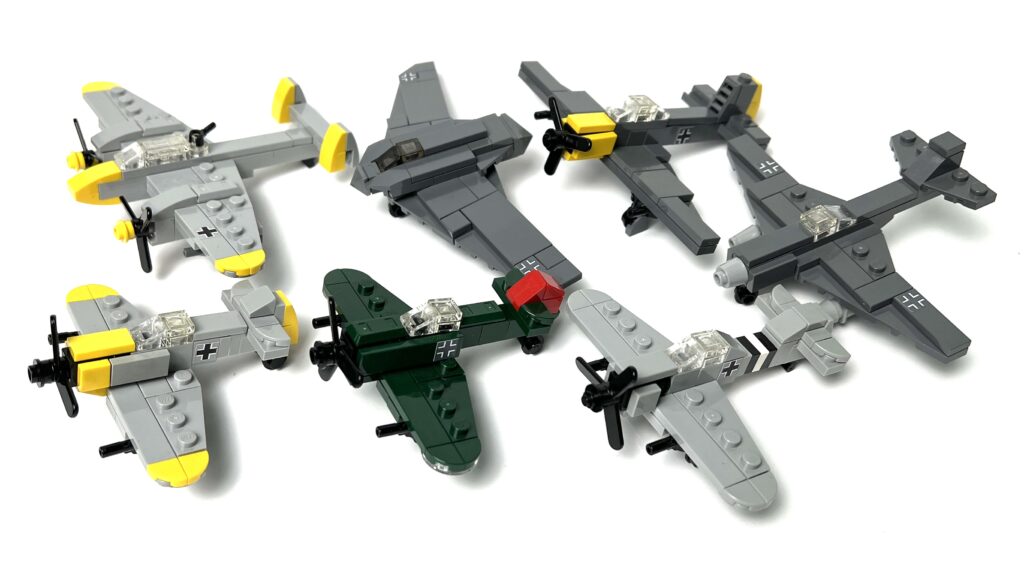When people think of the German Luftwaffe during WWII, they picture sleek fighters screaming across the skies and powerful bombers darkening the horizon. The Luftwaffe introduced some of the most advanced designs of the war, from dive bombers to the world’s first operational jet fighter.
And since I’ve already built these aircraft in micro-scale, it was time to give them a proper showcase! Below you’ll find some of the most famous German aircraft, complete with photos, fun facts, and tutorials so you can build them yourself.
Messerschmitt Bf 109 – The Backbone Fighter
The Bf 109 was the Luftwaffe’s workhorse fighter. Fast, agile, and deadly, it flew from the Spanish Civil War all the way to the end of WWII. It was Germany’s most produced fighter and racked up countless air victories.
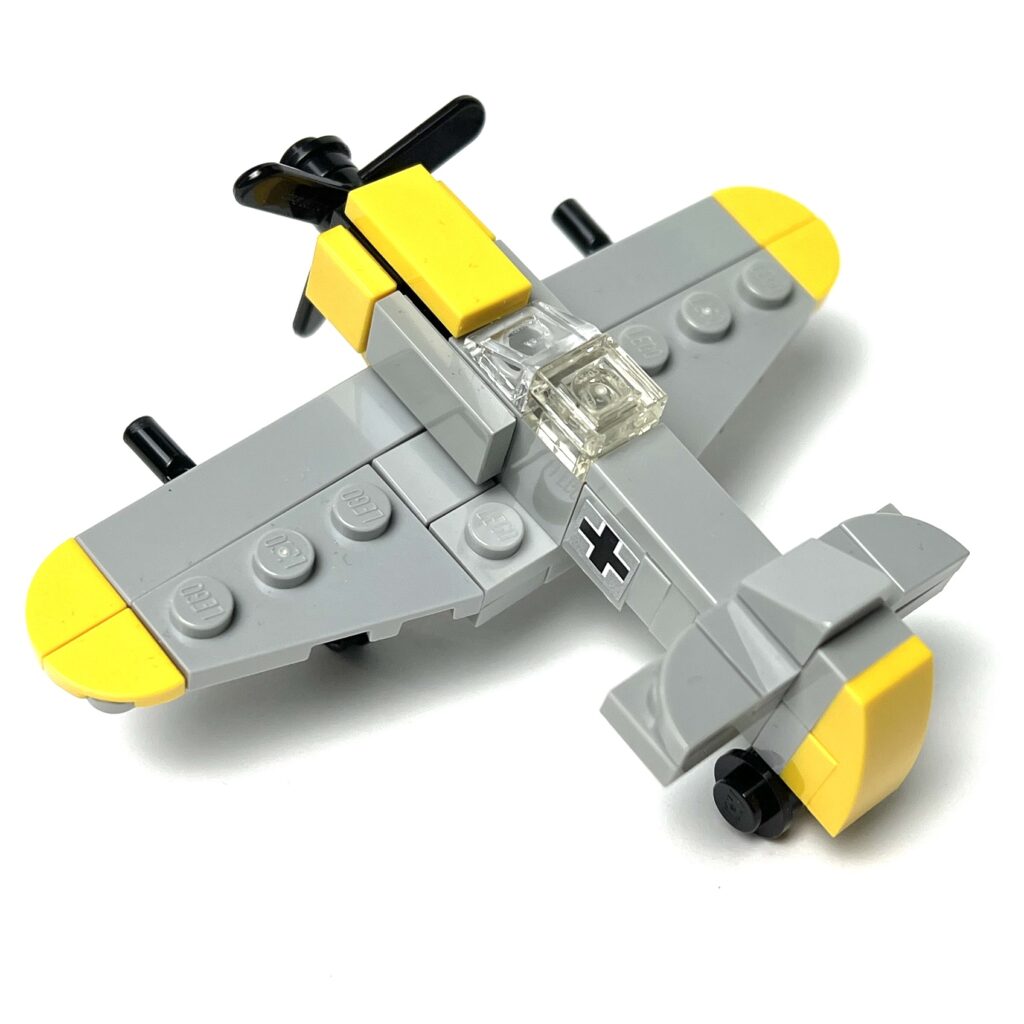
The Bf 109 comes in an array of colour schemes, but I think the best known one is the grey and yellow variant(Bf 109E-3), which I’ve made here.
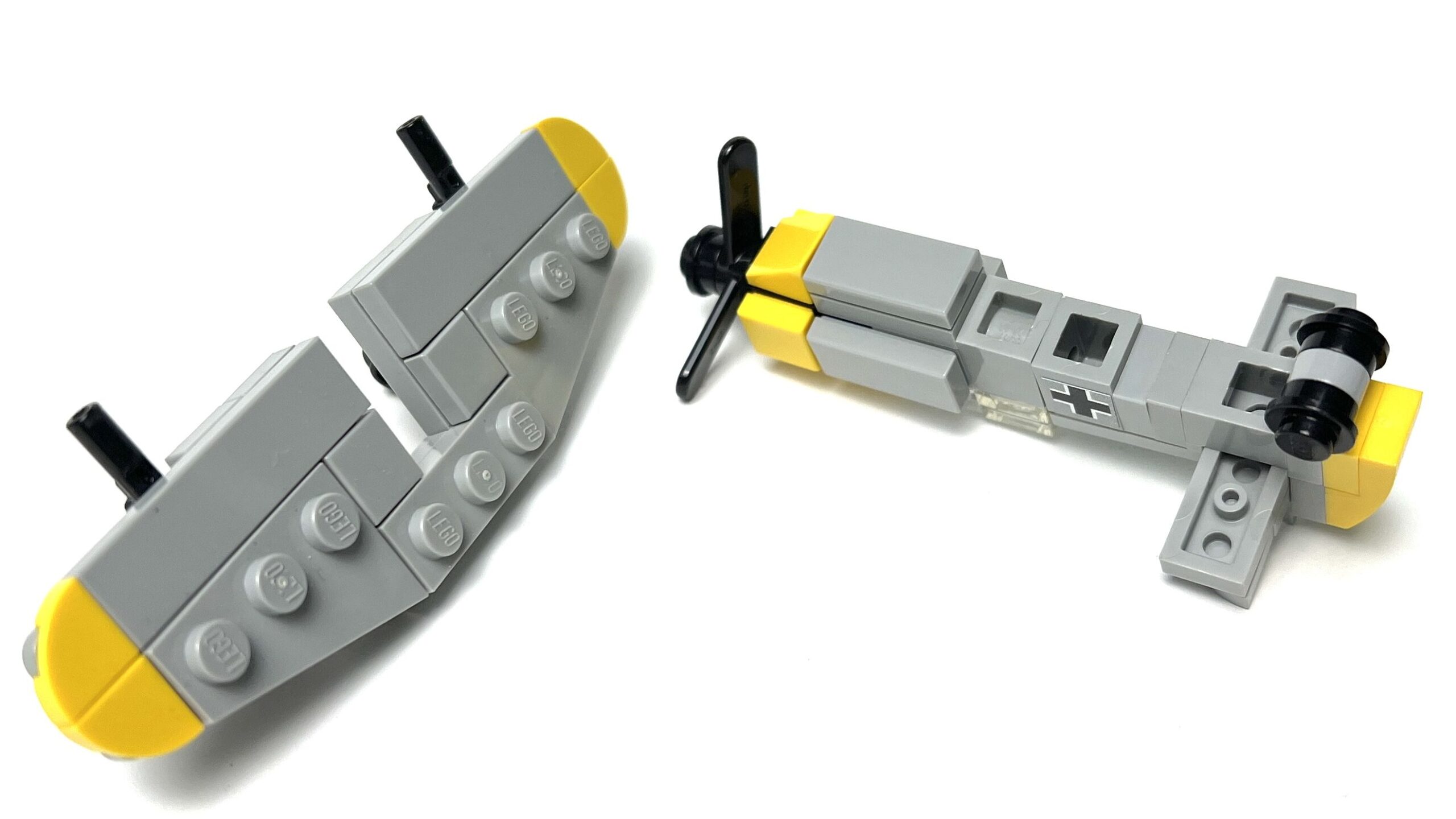
I used SNOT building techniques to achieve this paint scheme, but you can also interchange the tiles and bricks to fit another scheme of your choosing.
The main body uses a modified brick with 5 studs(travis brick), a brick I use very often, because it allows for building on all sides. It also gives me a cavity to put a 1×3 bar inside, so I can have a rotating propeller.
I was also able to fit some guns on the underside of the wings as well as landing gear.
Having said that, the wings are only attached with one stud, which may seem a little flimsy, but the clutch power is enough to keep this thing soaring. Nothing beats the clutch power of Lego!
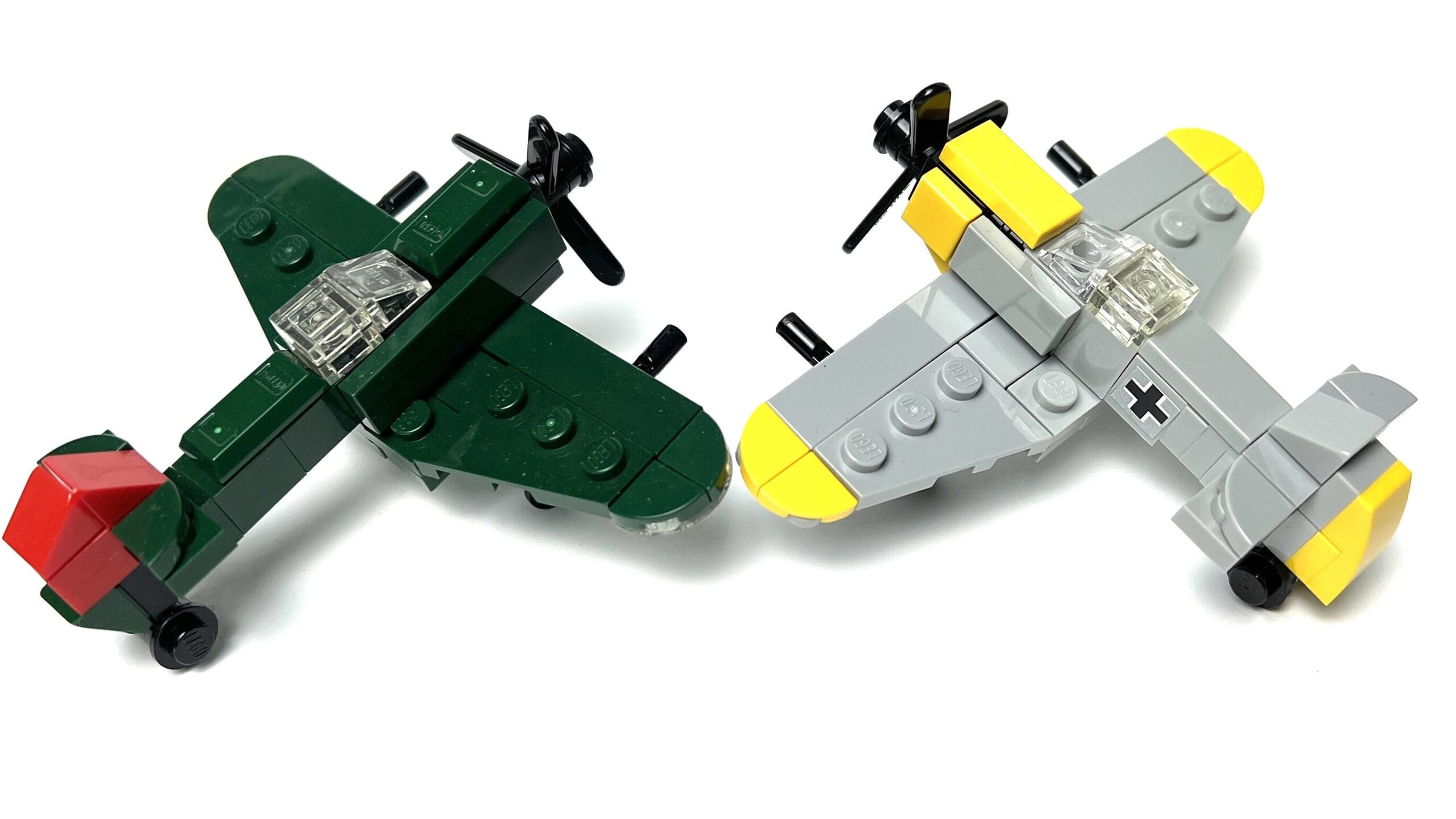
Just to prove a point, I attempted to build the Bf 109 B-2 variant as well, which is no easy feat considering dark green parts are rarer, but I think it turned out nicely with some minor changes.
Here’s a tutorial for the Bf-109:
Focke-Wulf Fw 190 – The “Butcher Bird”
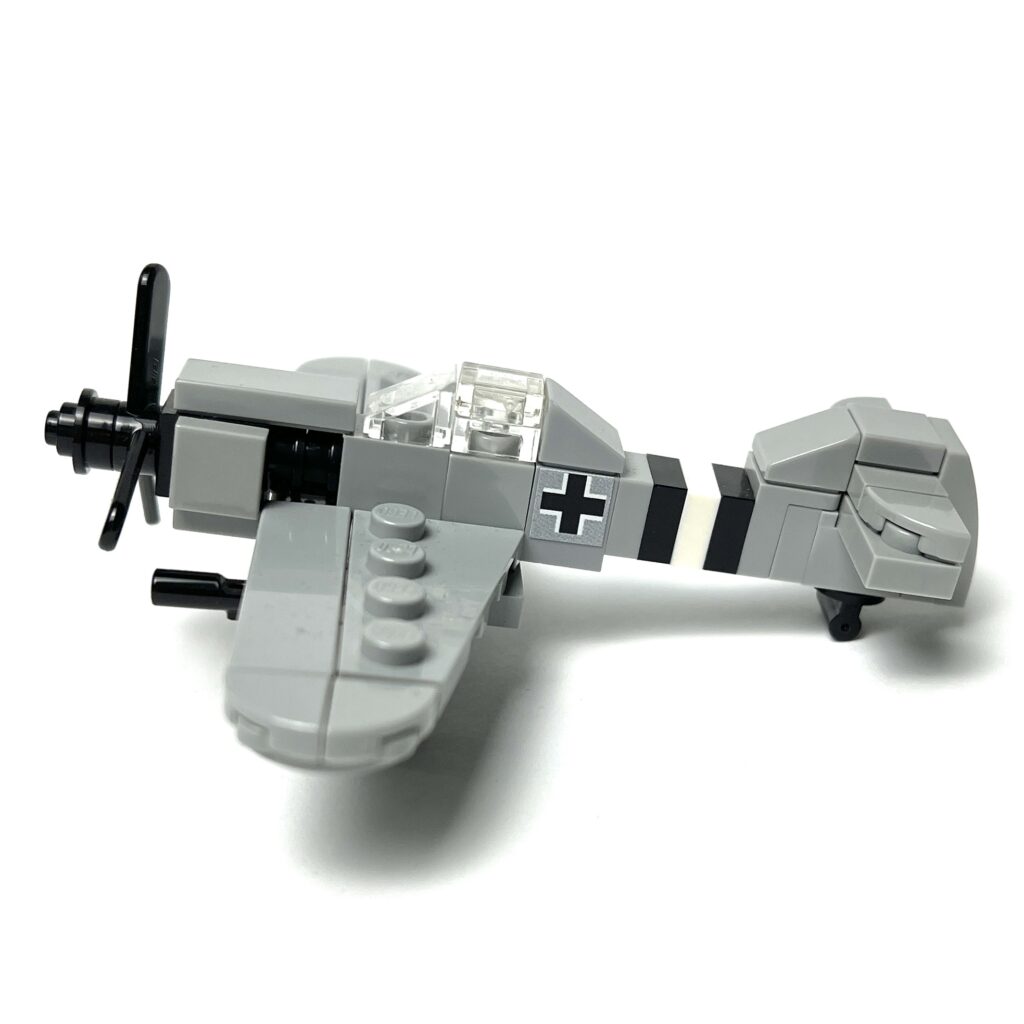
Nicknamed the “Butcher Bird,” the Fw 190 gave Allied pilots nightmares. With its powerful engine, heavy armament, and excellent handling, it was considered one of the best fighters of the war.
I never got around to making a tutorial for this aircraft, but the basic frame is the same as the Bf-109.
Junkers Ju 87 Stuka – The Fearsome Dive Bomber
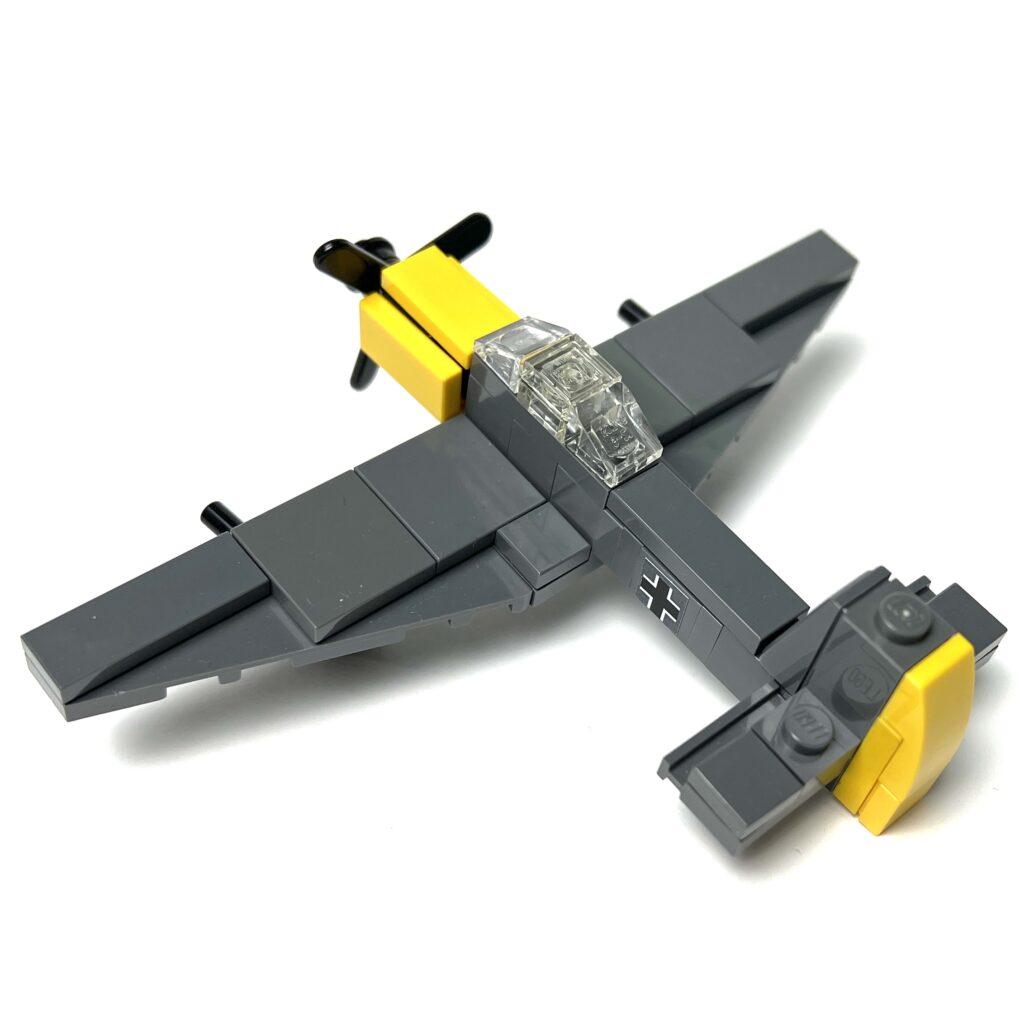
The Ju 87 Stuka dive bomber is infamous for its screaming sirens (the “Jericho Trumpets”) that terrified soldiers on the ground. While effective in early Blitzkrieg campaigns, it became vulnerable against stronger air defenses later in the war.
Messerschmitt Me 262 – The Jet Age Arrives
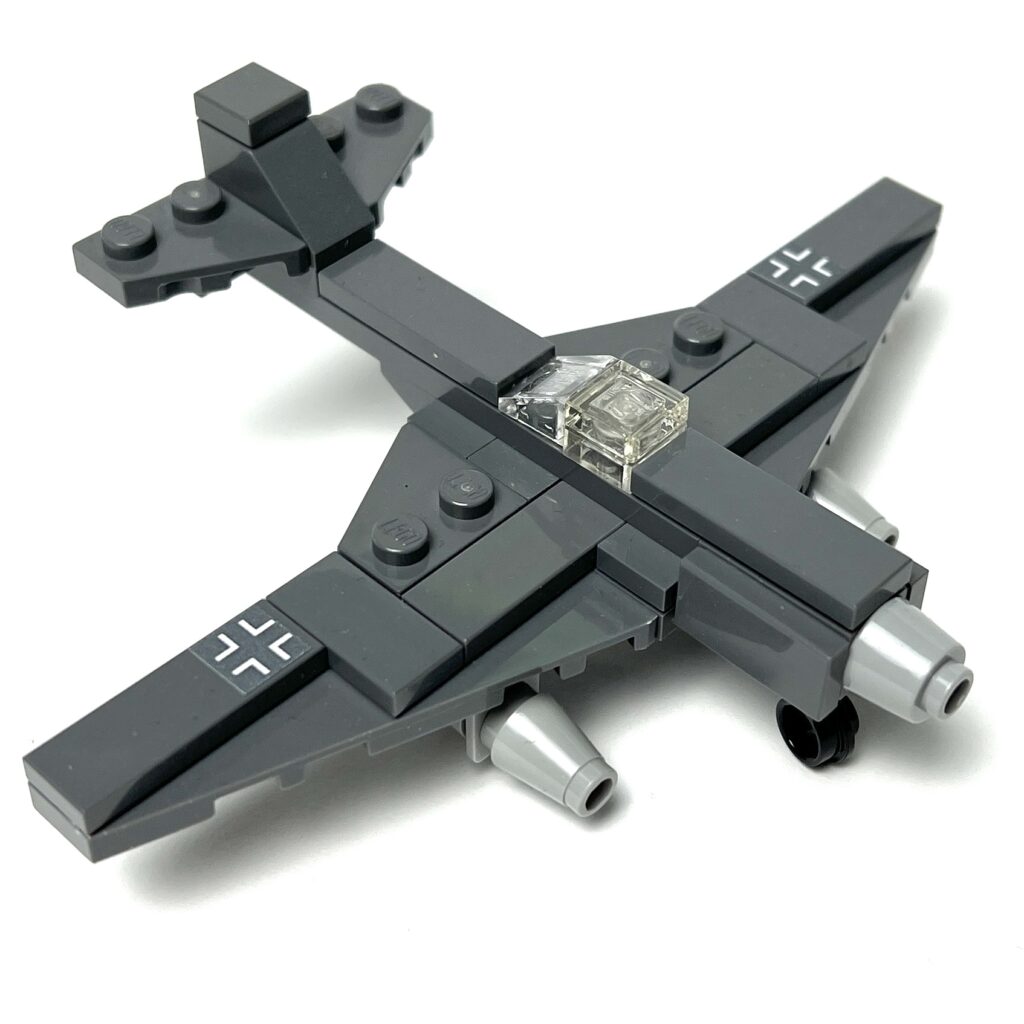
The Me 262 was the world’s first operational jet fighter. With speeds unmatched by Allied planes, it was far ahead of its time. However, it came too late in the war to change the outcome, but it inspired post-war jet designs worldwide.
Messerschmitt Bf 110 – The Heavy Fighter
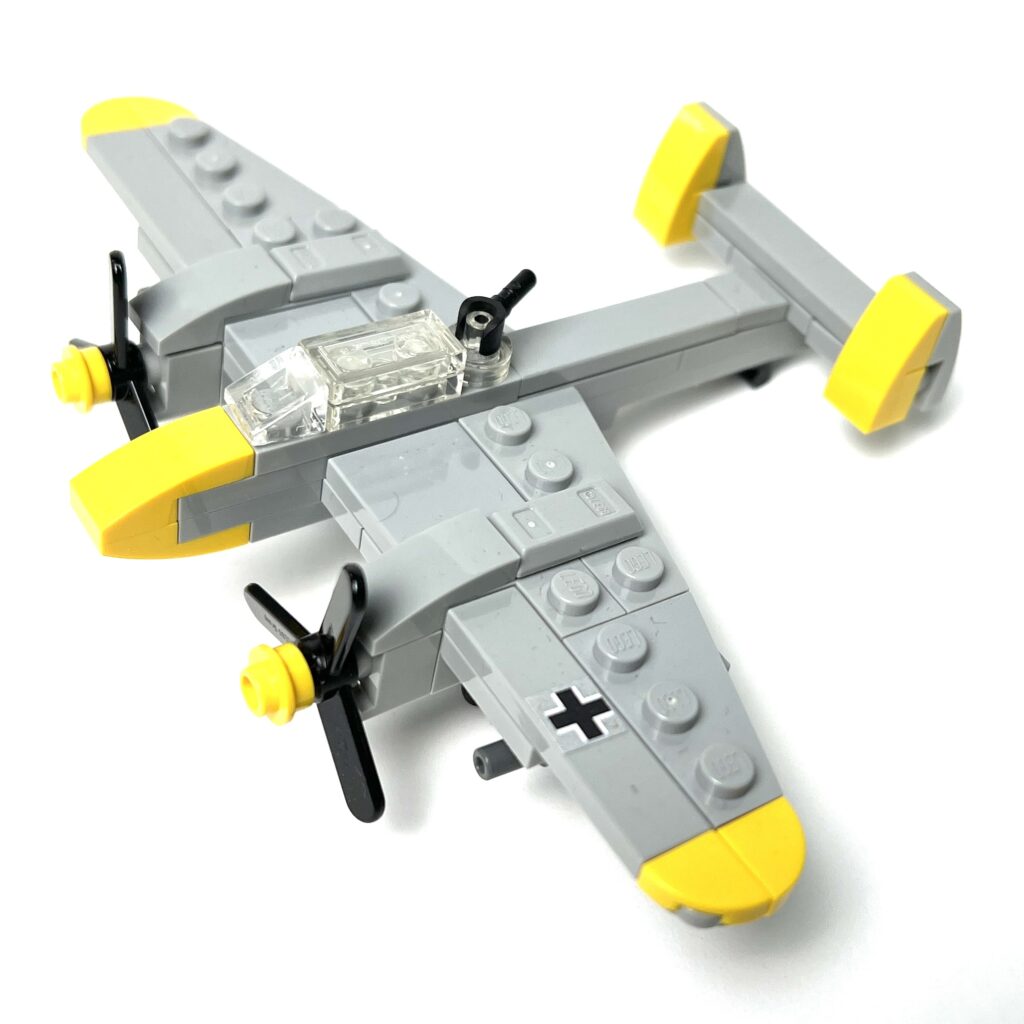
The Bf 110 was a twin-engine heavy fighter designed for long range and heavy firepower. It struggled against nimble single-seat fighters, but later proved effective as a night fighter.
This ended up being my favourite build of the all the Luftwaffe, because it’s unique with it’s twin propellors and top MG turret.
Horten Ho 229 – The Flying Wing
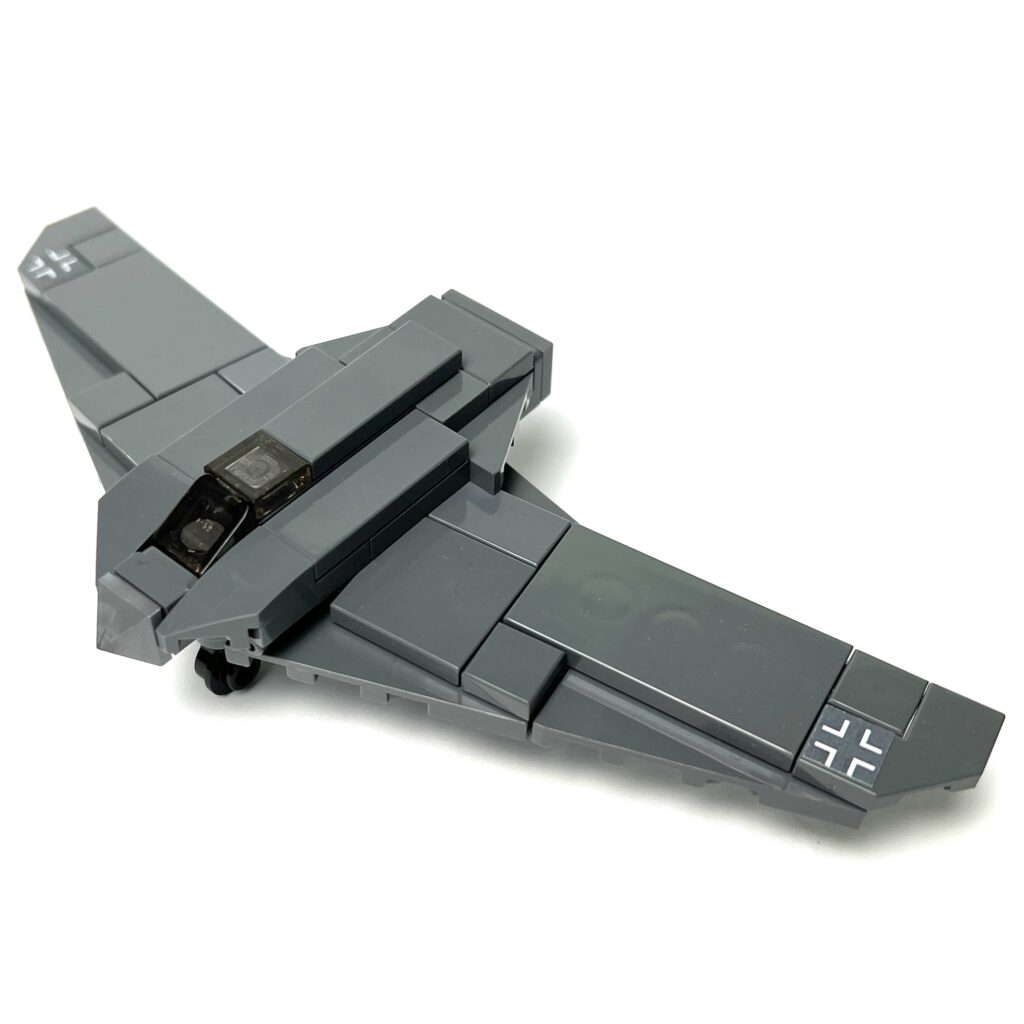
The Horten Ho 229 was one of the most futuristic designs of WWII. Developed by the Horten brothers, it was the world’s first jet-powered flying wing. With its sleek, almost alien shape, it promised high speed, long range, and a reduced radar signature — earning it the nickname “the first stealth aircraft.”
The Ho 229 was intended to combine the speed of jet propulsion with the efficiency of a flying wing design, making it a potential game-changer. However, only a few prototypes were built before the war ended, and it never saw combat. Today, the only surviving Ho 229 is preserved at the Smithsonian National Air and Space Museum in the United States.
If you like my post on this subject, stay tuned because there will many more of these coming! Also, leave a comment and let me know what else you would like to see in future posts. Thanks for reading!
Tip: It’s all about trial and error. If you ask two people to build the same model in a certain scale, it will more or less look the same, but if you are experienced enough, you will know what the slight differences in technique and style are. Experiment for yourself!

